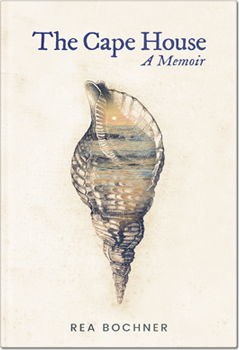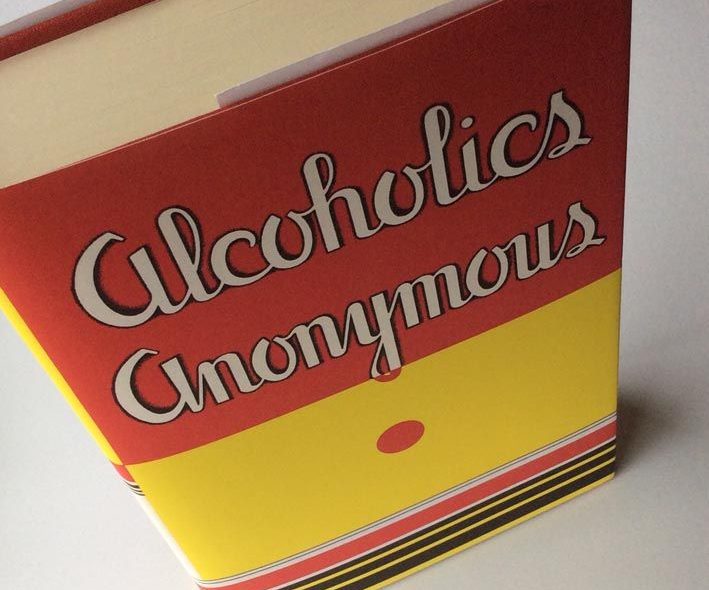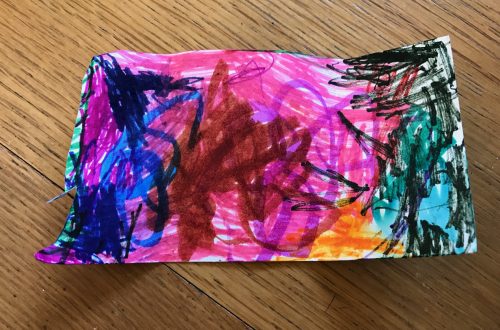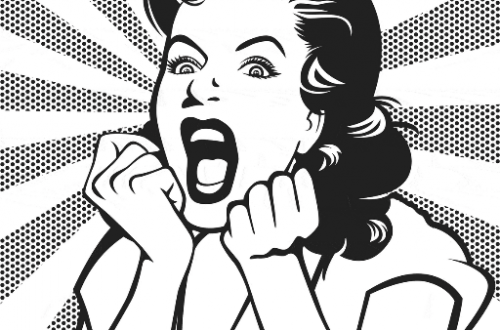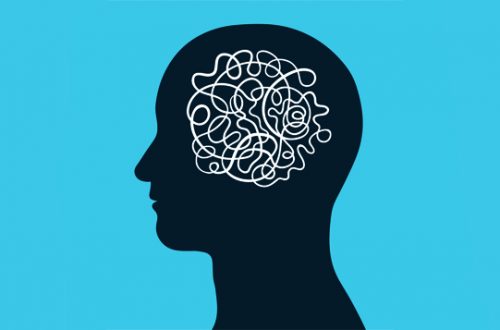Recently, Alcoholics Anonymous has gotten some serious flak.
A number of alcoholics and researchers have written articles explaining reasons why A.A. doesn’t work: the language of A.A.’s “Big Book” is patriarchal and sexist; it’s demoralizing and dangerous for a person to call themselves “powerless”; the program sets people up for a lifetime of fixation on not drinking; members are simply swapping their addiction to alcohol for an addiction to A.A. One writer even called A.A. “pseudo-scientific,” pointing to the fellowship’s low success rate of 5-10%.
For the most part, I’ve shrugged it off. Everyone is entitled to their own opinion – and I even agree with some of them. The difference, for me, was that I was encouraged to try and identify into the fellowship, looking past the things that didn’t work for me (like the man-centered language of the “Big Book,” which was written in 1939), instead of comparing myself out of it.
Then, this week, I saw an article by Liz Brown, inspired by the recent #metoo movement, called “The Culture of Alcoholics Anonymous Perpetuates Sexual Abuse”. The piece describes instances of sexual harassment and sometimes assault in the rooms of A.A., combined with manipulating the victims by telling them they will drink again if they leave the fellowship. Brown also refers to the “13th Step,” a wink-wink term well-known in A.A. that describes someone with more than a year of sober time who hits on a newbie. Back in 2015, filmmaker (and former AA member) Monica Richardson even produced a documentary about it, charging the court system with sending sexual predators and convicted felons to the rooms of A.A., and the fellowship itself for not taking responsibility for these women. The article calls A.A. to task for asking victims of 13th stepping, sexual harassment or assault to “look at their part”, in their fourth-step inventory, in what happened to them.
This one made me nervous.
It’s not that “13th Stepping” doesn’t happen. It happened to me when I was young in program, and a significantly older man hit on me. Luckily, I had safe women in the fellowship who told me he was a predator and to stay far away (They would be proven right a few years later, when the guy went to jail for statutory rape.) Harassment and assault have also happened in the rooms of A.A., and each instance is tragic, horrifying, and enraging.
But.
To say that this is the “culture” of A.A. is absolutely wrong. You wouldn’t say the “culture” of a religion perpetuates assault just because a practitioner of that religion – or even a significant number of practitioners – committed assault. The actions of these people, while reprehensible, are not a reflection of the larger community or what it stands for.
We have to be so careful not to dismiss A.A. as a whole by the mistakes of some of its members, because it has saved millions of lives. Imagine an alcoholic googling A.A. in the middle of the night, desperate for help, and coming across Liz Brown’s article. With no idea of what A.A. really is, they might be scared off the program forever, never find the help they need, and eventually die of alcoholism.
So while I’ve made an effort to say what A.A. isn’t, I really want to talk about what A.A. is. Because I want that alcoholic who googles A.A. in the middle of the night to know.
Allow me to give you a little history.
In 1935, two drunks named Bill Wilson and Dr. Bob Smith got together and formed a spiritual fellowship that followed the model of a religion-based program called “The Oxford Group.” This group had six steps which focused on building a relationship with God and helping other alcoholics in order to stay sober. These two knew that happened to them when they drank, and they threw themselves into the spiritual work like their lives depended on it – because it did. There was a fire under them, because they had no other option. Back then, alcoholics were locked up in psych wards until they dried out, then released to the world with warnings not to drink again. The ones who truly couldn’t stop were locked away for good. There were no rehabs, no addiction counselors, no outpatient clinics. All these people had was each other. Their only other option was death.
Their fellowship grew slowly, and a few years later, they had a group of around 100 and a success rate of 75%. These seeming miracle stories, hopeless alcoholics who had somehow gotten sober, attracted the attention of John D. Rockefeller, who helped get them in national newspapers. Suddenly, the group was getting thousands of letters from alcoholics and families of alcoholics from all over the country, desperate for help. They decided that the easiest way to help all of them would be to write a book that outlined with clear directions how they got sober, and send it to them. The book was called “Alcoholics Anonymous”, now known as the “Big Book,” which also became the Fellowship’s name. The Oxford Group’s six steps were expanded to twelve. Bill wrote a few chapters describing the alcoholic malady in detail so that those reading it would have a true understanding of how it worked, and Dr. William D. Silkworth, the best-known physician working with alcoholics, provided a wholehearted endorsement of the fellowship in the book’s preface.
The book is Alcoholics Anonymous.
For a number of years, the twelve steps formed the basis of the fellowship. People came in desperate, put down the drink, powered through the twelve steps as quickly as possible, and immediately started helping other people. People got the process done in weeks – sometimes days. The goal, the book says, was not to get sober. Stopping drinking was simply the way to clear the brain in order to have a spiritual experience, to build a connection with a higher power of one’s understanding, and to develop a spiritual way of living. That was the point. Because without that experience, the alcoholic has no way to function without alcohol. To take alcohol away from an alcoholic is to take away their medication; without a spiritual experience, we are essentially untreated sociopaths.
They talk about this, too, in the the Big Book, describing the unmedicated alcoholic to a T: “We were having trouble with our personal relationships, we couldn’t control our emotional natures, we were prey to misery and depression, we couldn’t make a living…” Most alcoholics will tell you that not drinking is way more painful than drinking, which is why they keep going back to it. But the twelve steps changes the game, shows the alcoholic how to get out of the pain and back into life.
So for these men and women, the steps weren’t just some lines on a poster in a church basement. The steps were the key to life and the way they lived serenely, no matter what their problems were.
Fast forward to the 70’s and 80’s, when rehabs and addiction clinics started springing up all over the country (thank you, Betty Ford). While some of them kept the twelve-steps at the center, many others starting “therapizing” recovery, introducing all sorts of psychological lingo that took the focus off the steps and the necessary spiritual element of recovery. Meetings became less about how people were working the steps, and more about sharing “war stories” and focusing on life’s problems, rather than the solution. (It even got to the point where people who mentioned the twelve-steps were dismissed as “Big Book thumpers.”) Many people were able to get sober and stay sober this way, but many, many more were not. It’s why such a large number of alcoholics are constantly in and out of rehabs and floating into and back out of meetings; they’re getting sober, but they’re not recovering. And if they don’t recover, they will hurt the people around them, and it’s very likely they will drink again.
Again, look at the numbers: the people who started this, who recovered through the twelve steps, had a 75% success rate; considering the millions of alcoholics in this country alone, today’s rate of 5-10% is terrifying.
(Interestingly, a similar thing happened in Overeaters Anonymous, which was founded in the early 60’s by a compulsive overeater in Los Angeles who discovered the twelve steps when she accompanied a friend to a Gambler’s Anonymous meeting. As OA grew, the focus shifted from the twelve steps to food plans and tools of recovery like meetings, phone calls to fellow members, and reading program literature. The problem was, without the real solution, you could spend 24 hours a day in a meeting and be squeaky clean abstinent, and still want to rip someone’s head off.)
In the 90’s, a small contingency in A.A. saw the falling numbers and their own restlessness despite their sobriety, and knew there had to be something more to the program. They turned back to the Big Book, back to where it started, and refocused on the 12 steps. The results were remarkable. People were getting and staying sober, happily. Ironically, they got a lot of blowback from “mainstream” A.A. (and still do), who thought of them as rigid and proselytizing. But it didn’t matter. People started to want what they had, and their movement grew.
Today, this “other” A.A. is still a minority, but it is growing by leaps and bounds because these people are having real experiences. In their meetings, the focus is only on the twelve steps. Men only sponsor men, and women only sponsor women. They don’t count days, or months, or years. It doesn’t matter how long you’re sober; it matters if you’ve found the God of your understanding and are helping someone else. That is the “culture” of A.A., as it is meant to be.
There are very, very sick people in the fellowship who harass and assault women, who scam fellow members, who steal and lie and cheat. Many of them are drinking, and many of them are sober – but are still suffering from untreated alcoholism. It does not excuse or condone anything, and they are responsible for their choices. There are sick people who meet with other sick people in order to not drink, and suffer through years of misery because they don’t know another way. And to be honest, I think the people who say that that A.A. doesn’t work are right.
But there is another A.A.
And to the alcoholic who reads this at 3 in the morning, I beg you to please, please, come and see it for yourself.


